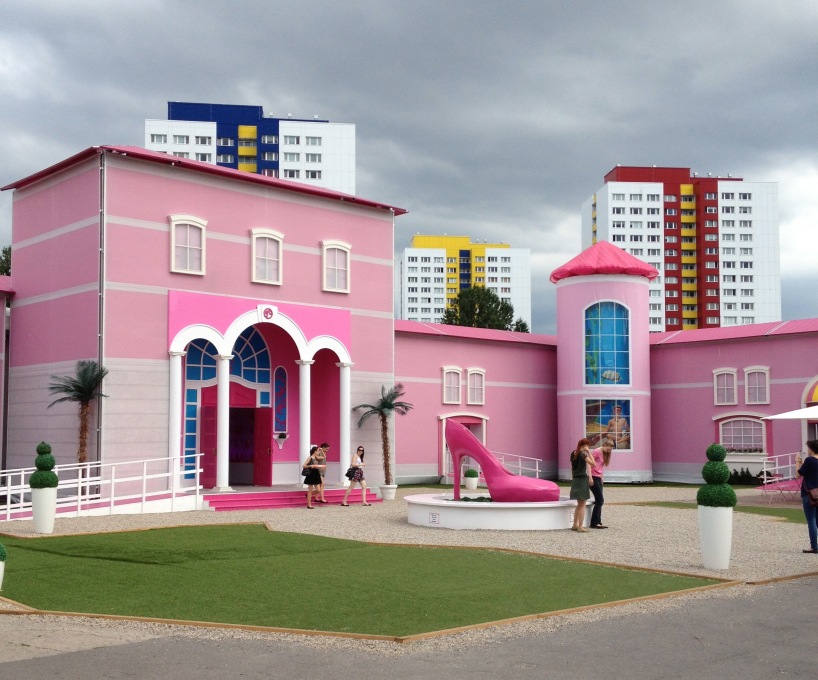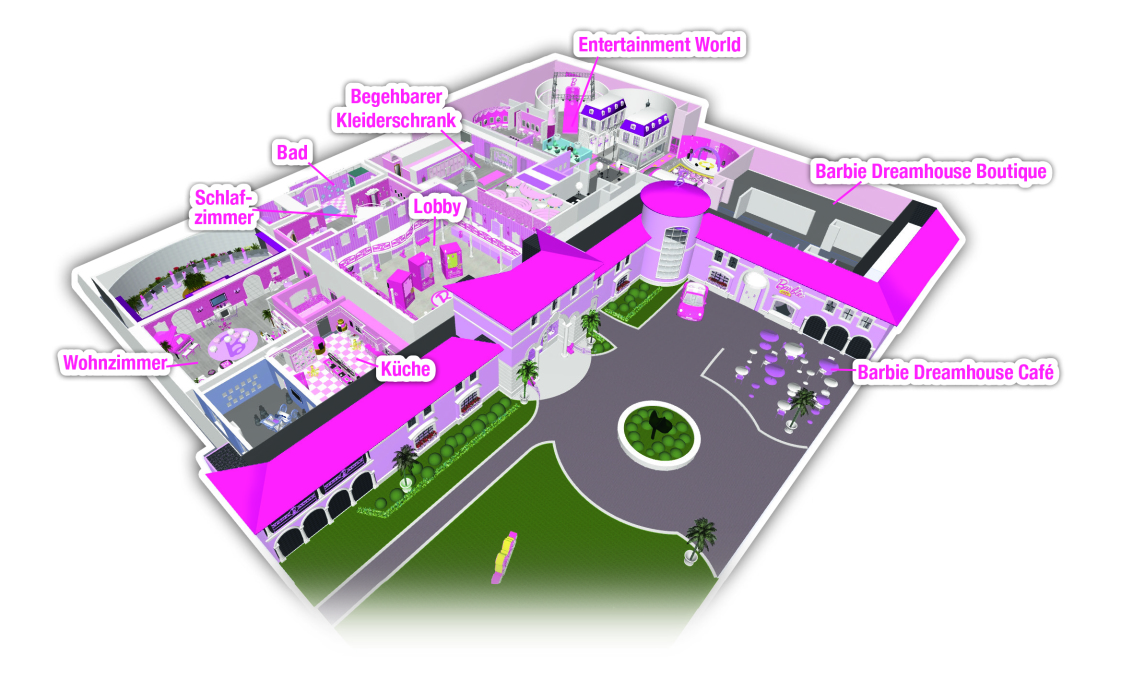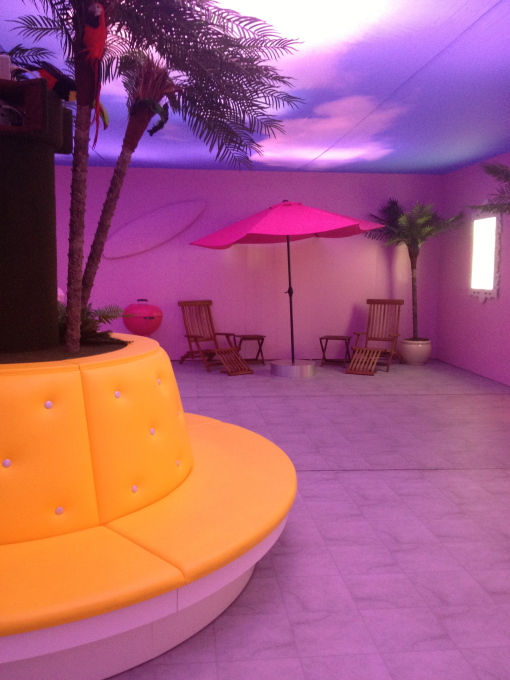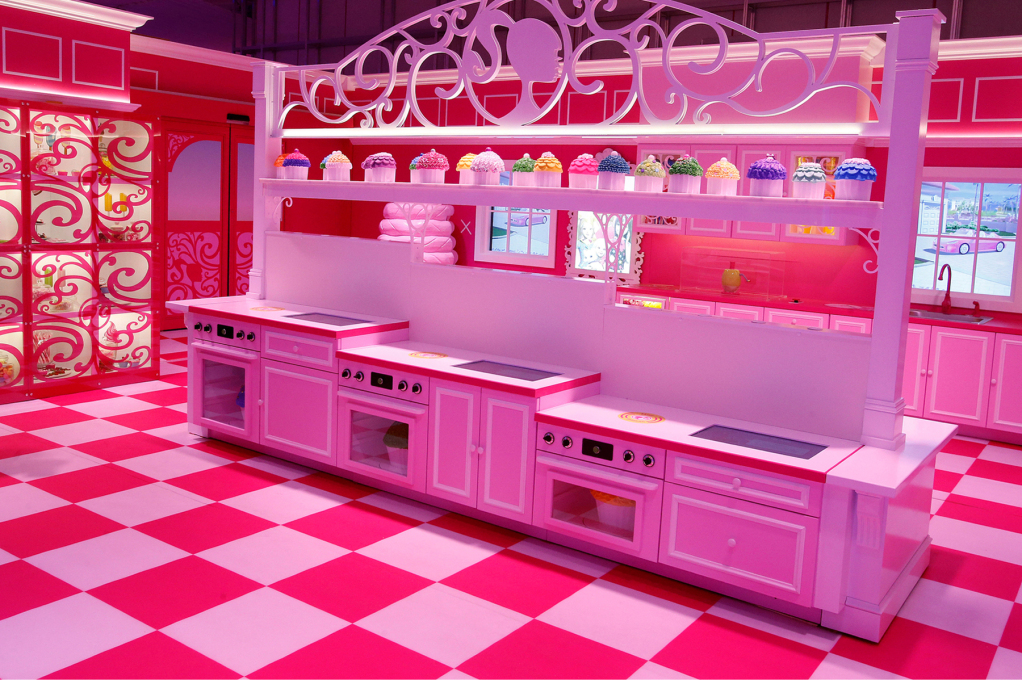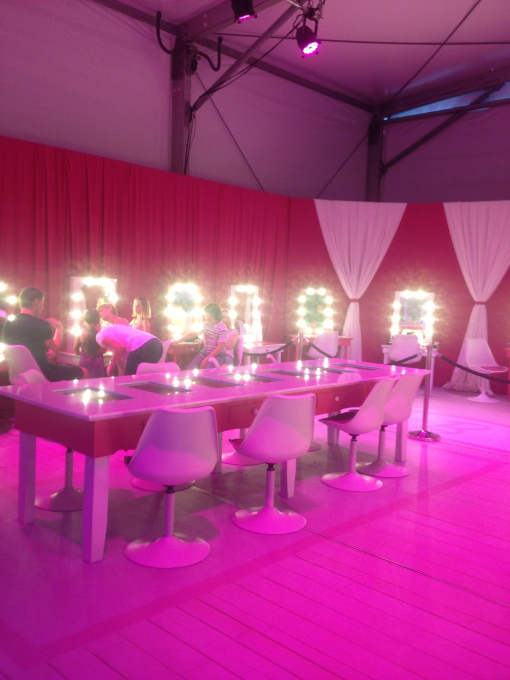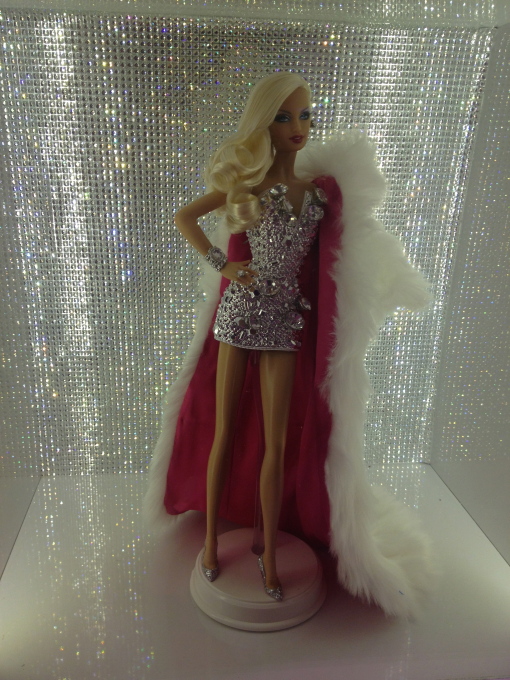Sometimes we get a little bit plastic fantastic, and this Building of the Week is just that: the Barbie Dreamhouse, now in Berlin. Nathalie Janson, the Editor-in-residence of Women in Housing (an Abitare platform) went for a visit and found out what the color pink, received notions of domesticity and plattenbau had to do with our favorite doll.
Berlin’s recent property boom inspires strong emotions and a lingering anxiety, as residents grapple with the changes brought on by rising real estate values, gentrification, and projects like the Mediaspree, the city’s largest private development. It’s not very surprising, then, that the opening of the Barbie Dreamhouse Experience in the city center of Berlin drew a mixed crowd. On May 16th, feminists and activists concerned about Barbie’s influence on young children and commercialized concepts of home gathered outside the 2,500 square meter interactive exhibit, a joint venture between Austria’s EMS Entertainment and Barbie’s manufacturer, Mattel, to bring the Barbie Malibu Dreamhouse to life. One feminist activist even climbed onto a pink-high-heeled-shoe-shaped fountain, brandishing a burning doll on a cross, as fans of Barbie entered into the Dreamhouse for the first time.
Since the launch of the first Barbie in 1959, the doll has been at the center of many controversies revolving around the objectification of women, unhealthy body ideals, and racial prejudice. Barbie herself may be a lightning rod for controversy, but her Malibu home has rarely been in the spotlight. The Dreamhouse debuted in 1962 as a surprisingly modest studio apartment, furnished with mid-century modern furniture and plenty of bookshelf space. Over the years, it followed the trend of suburban development; today, the plastic, pink and purple, three-story house that we associate with Barbie is a miniature of the oversized, single-family American “dream” home, itself a symbol of private ownership, suburban sprawl, and the subprime mortgage meltdown.
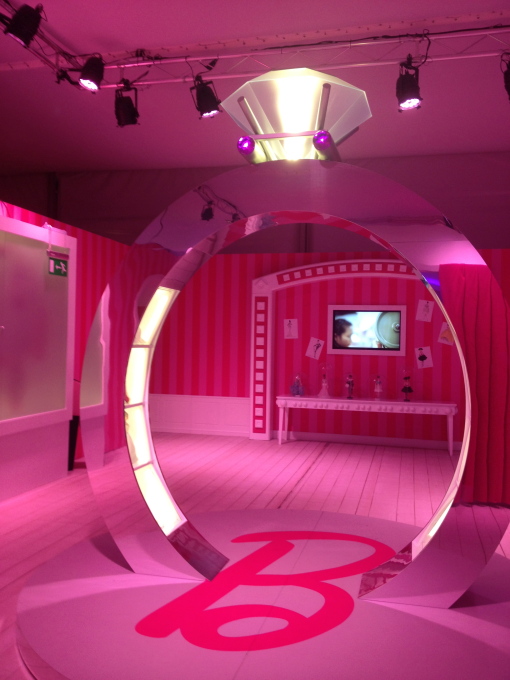
I came to the Barbie Dreamhouse Experience expecting a life-size replica of her Malibu home, as the press material promised. From the street, the building does superficially resemble a tacky Southern California mansion. The “house” on the inside, however, bears no relation to its exterior. Within a scaffold-and-canvas frame are multiple rooms without any doors or real windows: the dream house isn’t really a house by any stretch of the architectural imagination. EMS Entertainment, the organizers and designers of the exhibition, have made no attempt to hide the stage lighting or the large plastic ventilation ducts needed to cool the space. It’s so sparsely furnished and detailed that it looks more like an empty karaoke bar than anyone’s idea of the dream home.
Instead of trying to create a believable spatial experience, EMS Entertainment dialed up the whimsy, making the Barbie Dreamhouse Experience a surreal and disorienting one. Stepping from room to room, visitors move abruptly from season to season and even from one city to another. Pink walls are illuminated using pink lights and blue walls with blue lights, making the space feel eerily ethereal. There are giant cupcakes, fake sunsets, and an engagement ring big enough to walk through. Visitors engage with the “house” through games and multimedia narratives. These too lend a dreamlike element to the experience—perhaps a nightmarish one: at one point, the disembodied head of a dolphin emerges from a toilet.
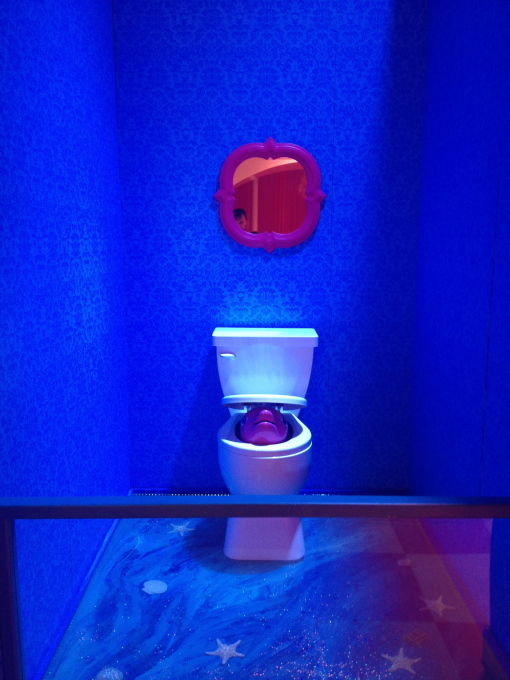
The Barbie Dreamhouse is so bizarre that it might seem frivolous to protest against it (or write about it). Nevertheless, its portrayal of the home as a feminine space is indeed problematic. The pink and purple color palette and the experiences advertised, which include baking virtual cupcakes, exploring Barbie’s endless walk-in closet, and strutting down a catwalk dressed as Barbie, clearly target a very particular audience (and parents able to afford the surprisingly high ticket prices – 19€ for adults, 15€ for children, and additional 10€ fees for the catwalk and pop star experiences). The Dreamhouse clearly didn’t appeal to men; outside, a dozen bored looking guys waited for their daughters, girlfriends, and sisters to exit through the gift shop.
Less troubling is the Dreamhouse’s commercialization of the home. Barbie’s enviable collection of clothes, shoes, and accessories might tempt young girls into unbridled consumerism, but the interior articulation of the Dreamhouse is too cheap and marginal to make any lasting impression. Ikea makes a more insidious example of how companies are able to capitalize on the home as a vehicle for consumption. Their new advertisement “One Room Paradise” (see video below) tells a story, through a girl playing with her apartment-complex dollhouse, of a single mother and her son. It’s refreshing to see a non-nuclear household depicted on television; however, the ad seems to suggest that the happiness of that household is predicated on their material possessions – you can never have enough.
You have to wonder why Berlin was the first stop on the Barbie Dreamhouse Experience tour of Europe. Although a lot of customer research surely went into the decision, which was probably also influenced by the availability of open land in the city center, it’s hard to imagine that Mattel and EMS Entertainment are happy about the Plattenbauten looming in the background of every photo of the Barbie Dreamhouse. A quick and cheap solution to Germany’s post-war housing crisis, the towers serve as haunting reminders of a radically different idea of the home, highlighting the lack of communal space or sentiment in the Barbie Dreamhouse and bringing into question the market’s inability to house the masses. The Barbie Dreamhouse is an emblem of private ownership and an individualistic culture that is rapidly becoming a universal norm; against this development, the Plattenbauten insist that housing can amount to more than just questions of representation and aspiration.
Nathalie Janson is currently developing the platform Women in Housing as an Editor-in-residence at Abitare.




